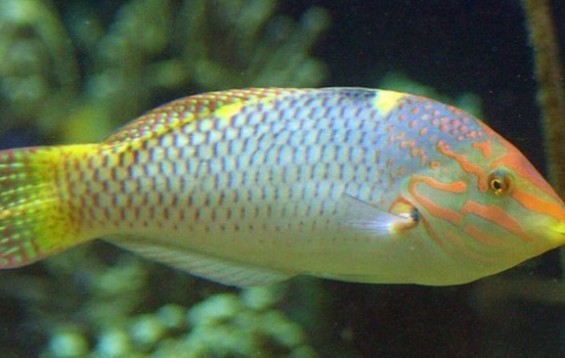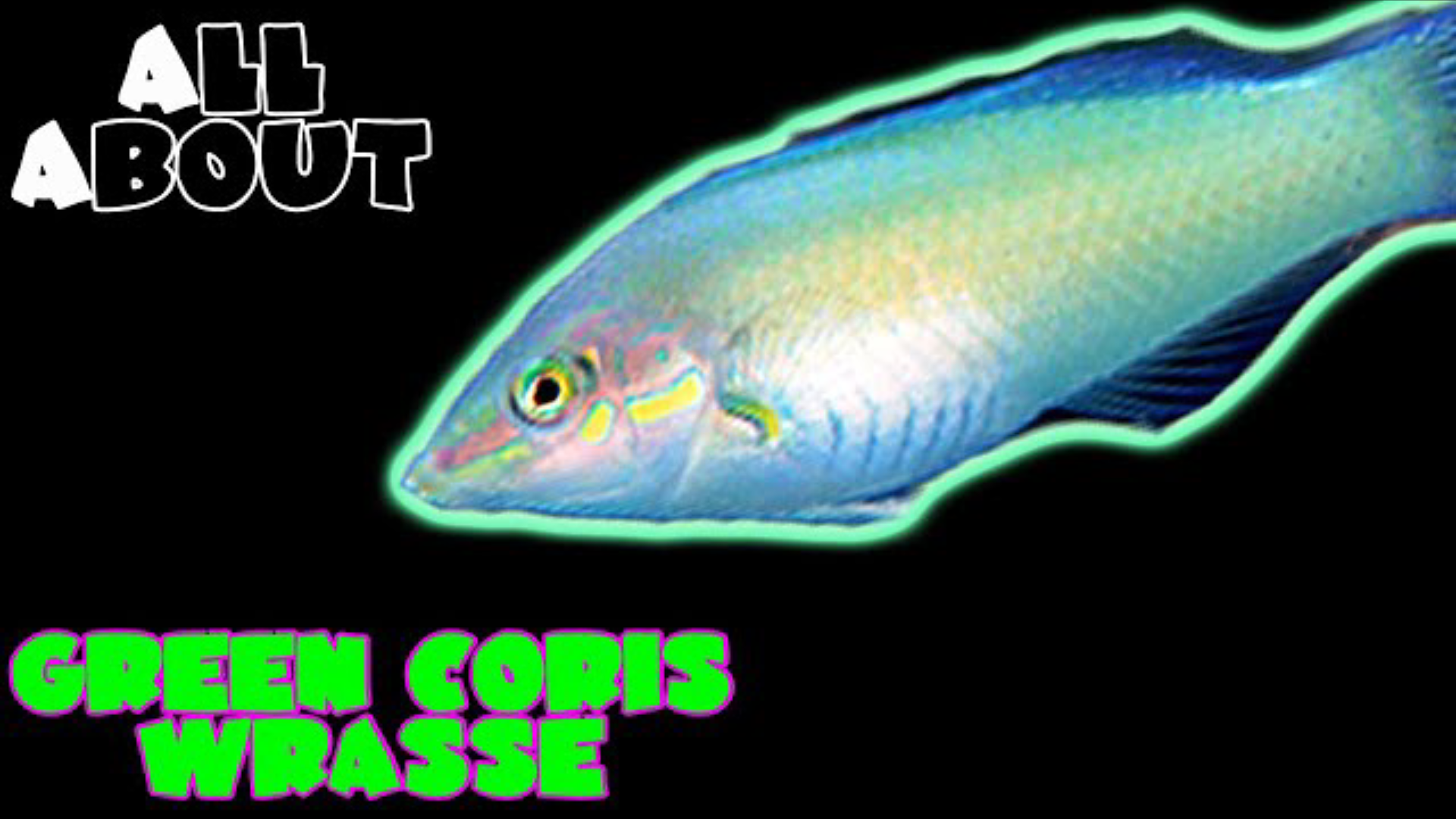- Name:
Checkerboard Wrasse
(View AKA's) - Family: Labridae
- Species: Wrasse
- Scientific Name: Halichoeres hortulanus


More Details
General info about Checkerboard Wrasse
The juvenile Marble/Hortulanus Wrasse is white with stripes, dots, and patches of black. With maturity, it becomes silver with a distinctive black checkerboard pattern on the body. The dorsal fin and tail are yellow, and the face is light green with orange to pink striped markings. A large aquarium with a sealed lid, a 2-3 inch sandy bottom to hide under if frightened, and other peaceful wrasses, including its own species, is a suitable environment. In the tank, it will eat fireworms and pyramidellid snails, protecting corals and clams. In addition, it may eat feather dusters, wild shrimp, tubeworms, and flatworms.
Caution with Checkerboard Wrasse
Wrasse are considered jumpers make sure your aquarium has a tight-fitting canopy or screen cover to prevent the Wrasse from jumping out of your aquarium. Wrasse have been known to jump through the smallest of holes in a canopy.
Wrasses prefer to have a 2" (5cm) sandbed to allow them to burrow into the sand to sleep or when they feel like they are in danger. Some people with bare bottom tanks have also added a Tupperware with a 2" deep sand bed to accommodate the wrasse's needs.
They are generally peaceful but may display aggression towards members of the same species.
Relevent Articles
Original Detail
| Name | Species | Family | Scientific Name | More Detail | Added by |
|---|---|---|---|---|---|
| Checkerboard Wrasse | Wrasse | Labridae | Halichoeres hortulanus | The juvenile Marble/Hortulanus Wrasse is white with stripes, dots, and patches of black. With maturity, it becomes silver with a distinctive black checkerboard pattern on the body. The dorsal fin and tail are yellow, and the face is light green with orange to pink striped markings. A large aquarium with a sealed lid, a 2-3 inch sandy bottom to hide under if frightened, and other peaceful wrasses, including its own species, is a suitable environment. In the tank, it will eat fireworms and pyramidellid snails, protecting corals and clams. In addition, it may eat feather dusters, wild shrimp, tubeworms, and flatworms. | PalaciosAn |
Changed by users
| Submitted Date | Submitted By | Status | Action |
|---|


